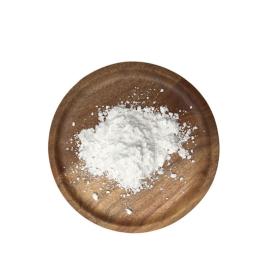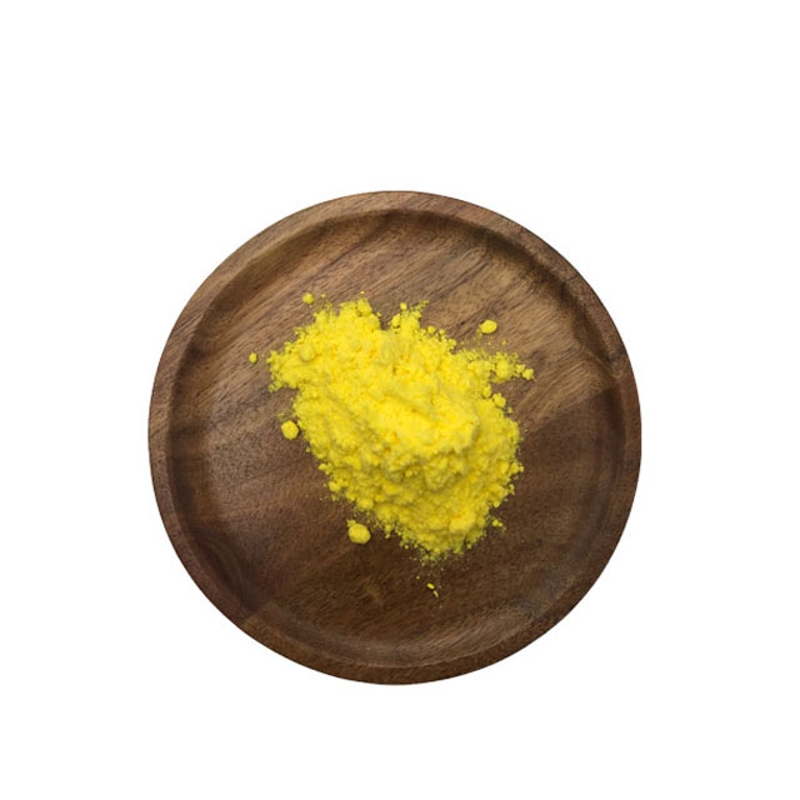-
Categories
-
Pharmaceutical Intermediates
-
Active Pharmaceutical Ingredients
-
Food Additives
- Industrial Coatings
- Agrochemicals
- Dyes and Pigments
- Surfactant
- Flavors and Fragrances
- Chemical Reagents
- Catalyst and Auxiliary
- Natural Products
- Inorganic Chemistry
-
Organic Chemistry
-
Biochemical Engineering
- Analytical Chemistry
- Cosmetic Ingredient
-
Pharmaceutical Intermediates
Promotion
ECHEMI Mall
Wholesale
Weekly Price
Exhibition
News
-
Trade Service
Antithymocyte globulin (ATG) plays an important role in the prevention of graft-versus-host disease (GVHD) after haploid stem cell transplantation (haplo-SCT).
However, the optimal type and optimal dose of ATG have not yet been determined, especially in patients with relapsed/refractory (R/R) and high-risk B-cell acute lymphoblastic leukemia (B-ALL) after CAR-T treatment.
Professor Lu Daopei’s team from Lu Daopei Hospital conducted a retrospective study comparing the R/R and high risk of anti-T lymphocyte globulin (ATLG) and rabbit anti-thymocyte globulin (rATG) on CD19-CAR-T treatment of bridging transplantation The prognostic impact of B-ALL patients, the results of the study will be announced at the 47th European Association of Blood and Bone Marrow Transplantation (EBMT 2021) in 2021.
The editor organizes the main content as follows for the reference of readers.
Research Method The study analyzed the clinical outcomes of 87 patients with R/R and high-risk B-ALL patients who achieved complete remission (CR) after being bridged by haplo-SCT with CD19-CAR-T treatment from July 2015 to March 2018 .
The pretreatment regimen was given to patients with systemic radiotherapy (TBI, 2Gy×5~6) + ATLG 20mg/kg (n=63) or rATG 5~7.
5mg/kg (n=24).
Cyclosporine, short-term methotrexate and mycophenolate mofetil are used to prevent GVHD.
As of August 2020, the median survival time of this cohort was 39 months (range: 29-58 months).
The results of the study were that patients in the ATLG group were relatively older, with a median age of 15 years (range: 2-49 years), while the median age of patients in the rATG group was 8 years (range: 4-41 years, p=0.
004).The total monocyte count (MNC, median 8.
7 [5.
0-15.
5]×108/kg vs 12.
0 [6.
8-17.
5]×108/kg, p=0.
005) of patients in the ATLG group and the number of CD34 cells transfused (medium The value of 4.
46 [1.
4-10.
2]×106/kg vs 5.
95 [2.
8-8.
8]×106/kg, p=0.
000) was relatively lower than that of patients in the rATG group.
In ATLG group and rATG group: Grade II-IV acute GVHD (29.
0% [95% CI: 19.
0-39.
0%] vs 37.
5% [95% CI: 18.
1-56.
9%], p=0.
598), grade III-IV Acute GVHD (6.
5%[95%CI: 0.
4-12.
6%] vs 16.
7% [95%CI: 1.
8-31.
6%], p=0.
164) and chronic GVHD (74.
1%[95%CI: 61.
2-87.
0%] vs The incidence of 69.
8%[95%CI: 49.
2-90.
4%], p=0.
526) was similar; the incidence of extensive chronic GVHD was 12.
7% (95%CI: 3.
9-21.
5%) and 15.
4% (95%CI: -0.
9-31.
7%), p=0.
959; EBV-DNAemia (15.
9% vs 29.
2%, p=0.
162), CMV-DNAemia (47.
6% vs 58.
3%, p=0.
372) and hemorrhagic cystitis ( 27.
0% vs 25.
0%, p=0.
851) had a similar incidence. The 3-year recurrence rates of patients in the ATLG group and rATG group were 13.
8% (95% CI: 4.
8-22.
8%) and 4.
5% (95% CI: -4.
1-13.
1%) (p=0.
248), respectively, and they died without recurrence in 3 years (NRM) rates were 20.
5% (95%CI: 10.
1-30.
9%) and 16.
7% (95%CI: 1.
8-31.
6%) (p=0.
746), and the 3-year leukemia-free survival (LFS) rates were 68.
3% (95%CI: 56.
7-79.
9%) and 79.
2% (95%CI: 62.
9-95.
5%) (p=0.
349), the 3-year overall survival (OS) rate was 69.
8% (95%CI: 58.
4-81.
2%) ) And 83.
3% (95% CI: 68.
4-98.
2%) (p=0.
234).
Research conclusions In patients who received CD19-CAR-T therapy bridging haplo-SCT therapy, the clinical results of the two types of ATG (ATLG and rATG) in GVHD prevention and viral infection were similar.
Larger randomized clinical studies are currently underway to further confirm these results.
Reference source: Z.
-Y.
Zhao, J.
-P.
Zhang, D.
-Y.
Liu, et al.
COMPARISON OF TWO KINDS OF ANTI-THYMOCYTE GLOBULIN ON OUTCOMES OF HAPLOIDENTICAL STEM CELL TRANSPLANTATION FOR REFRACTORY/RELAPSED AND HIGH- RISK B-CELL ACUTE LYMPHOBLASTIC LEUKEMIA AFTER CAR-T THERAPY.
The 47th Annual Meeting of the EBMT.
Abstract OS3-7.
Stamp "Read the original text" and we will make progress together
However, the optimal type and optimal dose of ATG have not yet been determined, especially in patients with relapsed/refractory (R/R) and high-risk B-cell acute lymphoblastic leukemia (B-ALL) after CAR-T treatment.
Professor Lu Daopei’s team from Lu Daopei Hospital conducted a retrospective study comparing the R/R and high risk of anti-T lymphocyte globulin (ATLG) and rabbit anti-thymocyte globulin (rATG) on CD19-CAR-T treatment of bridging transplantation The prognostic impact of B-ALL patients, the results of the study will be announced at the 47th European Association of Blood and Bone Marrow Transplantation (EBMT 2021) in 2021.
The editor organizes the main content as follows for the reference of readers.
Research Method The study analyzed the clinical outcomes of 87 patients with R/R and high-risk B-ALL patients who achieved complete remission (CR) after being bridged by haplo-SCT with CD19-CAR-T treatment from July 2015 to March 2018 .
The pretreatment regimen was given to patients with systemic radiotherapy (TBI, 2Gy×5~6) + ATLG 20mg/kg (n=63) or rATG 5~7.
5mg/kg (n=24).
Cyclosporine, short-term methotrexate and mycophenolate mofetil are used to prevent GVHD.
As of August 2020, the median survival time of this cohort was 39 months (range: 29-58 months).
The results of the study were that patients in the ATLG group were relatively older, with a median age of 15 years (range: 2-49 years), while the median age of patients in the rATG group was 8 years (range: 4-41 years, p=0.
004).The total monocyte count (MNC, median 8.
7 [5.
0-15.
5]×108/kg vs 12.
0 [6.
8-17.
5]×108/kg, p=0.
005) of patients in the ATLG group and the number of CD34 cells transfused (medium The value of 4.
46 [1.
4-10.
2]×106/kg vs 5.
95 [2.
8-8.
8]×106/kg, p=0.
000) was relatively lower than that of patients in the rATG group.
In ATLG group and rATG group: Grade II-IV acute GVHD (29.
0% [95% CI: 19.
0-39.
0%] vs 37.
5% [95% CI: 18.
1-56.
9%], p=0.
598), grade III-IV Acute GVHD (6.
5%[95%CI: 0.
4-12.
6%] vs 16.
7% [95%CI: 1.
8-31.
6%], p=0.
164) and chronic GVHD (74.
1%[95%CI: 61.
2-87.
0%] vs The incidence of 69.
8%[95%CI: 49.
2-90.
4%], p=0.
526) was similar; the incidence of extensive chronic GVHD was 12.
7% (95%CI: 3.
9-21.
5%) and 15.
4% (95%CI: -0.
9-31.
7%), p=0.
959; EBV-DNAemia (15.
9% vs 29.
2%, p=0.
162), CMV-DNAemia (47.
6% vs 58.
3%, p=0.
372) and hemorrhagic cystitis ( 27.
0% vs 25.
0%, p=0.
851) had a similar incidence. The 3-year recurrence rates of patients in the ATLG group and rATG group were 13.
8% (95% CI: 4.
8-22.
8%) and 4.
5% (95% CI: -4.
1-13.
1%) (p=0.
248), respectively, and they died without recurrence in 3 years (NRM) rates were 20.
5% (95%CI: 10.
1-30.
9%) and 16.
7% (95%CI: 1.
8-31.
6%) (p=0.
746), and the 3-year leukemia-free survival (LFS) rates were 68.
3% (95%CI: 56.
7-79.
9%) and 79.
2% (95%CI: 62.
9-95.
5%) (p=0.
349), the 3-year overall survival (OS) rate was 69.
8% (95%CI: 58.
4-81.
2%) ) And 83.
3% (95% CI: 68.
4-98.
2%) (p=0.
234).
Research conclusions In patients who received CD19-CAR-T therapy bridging haplo-SCT therapy, the clinical results of the two types of ATG (ATLG and rATG) in GVHD prevention and viral infection were similar.
Larger randomized clinical studies are currently underway to further confirm these results.
Reference source: Z.
-Y.
Zhao, J.
-P.
Zhang, D.
-Y.
Liu, et al.
COMPARISON OF TWO KINDS OF ANTI-THYMOCYTE GLOBULIN ON OUTCOMES OF HAPLOIDENTICAL STEM CELL TRANSPLANTATION FOR REFRACTORY/RELAPSED AND HIGH- RISK B-CELL ACUTE LYMPHOBLASTIC LEUKEMIA AFTER CAR-T THERAPY.
The 47th Annual Meeting of the EBMT.
Abstract OS3-7.
Stamp "Read the original text" and we will make progress together







